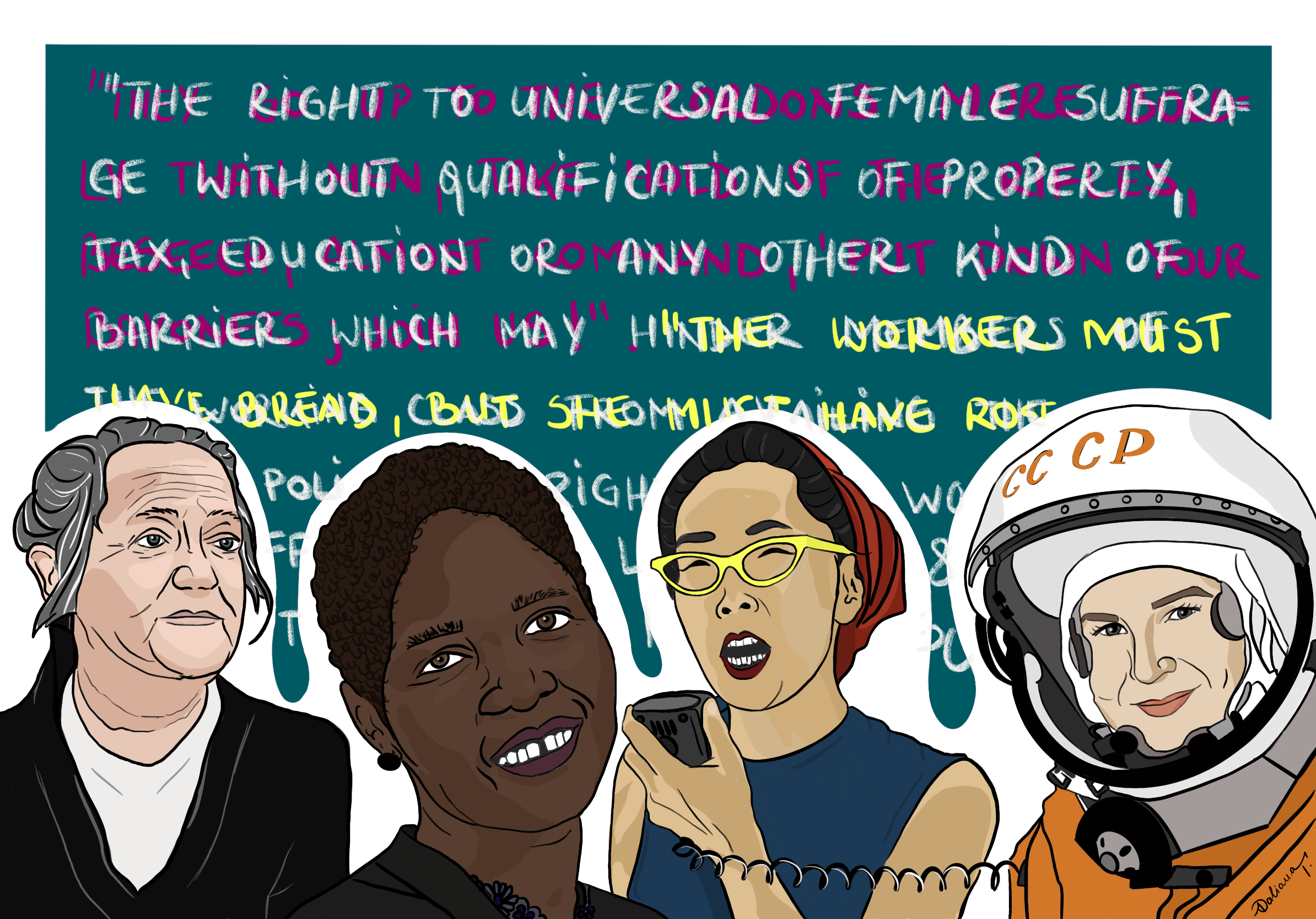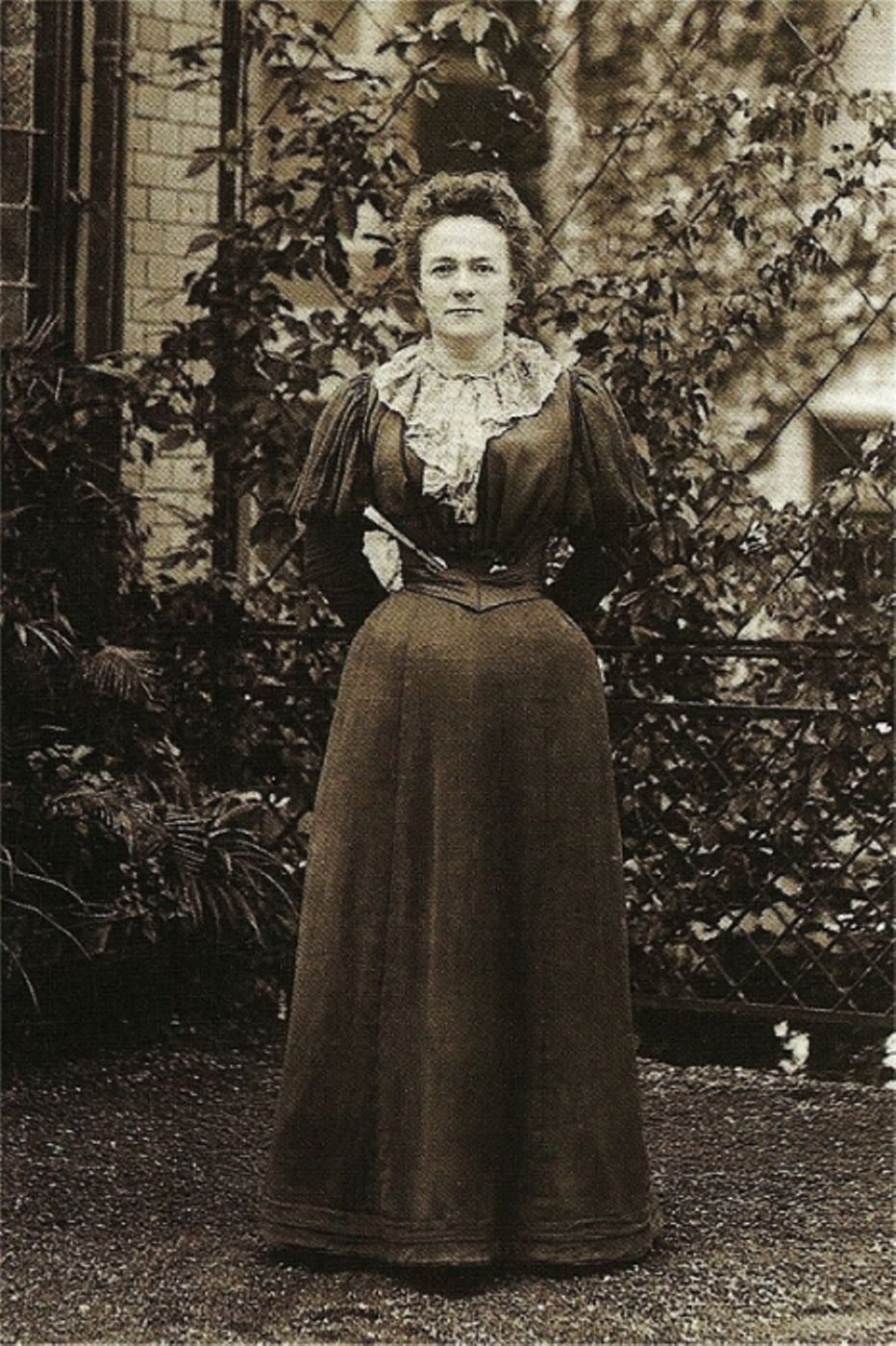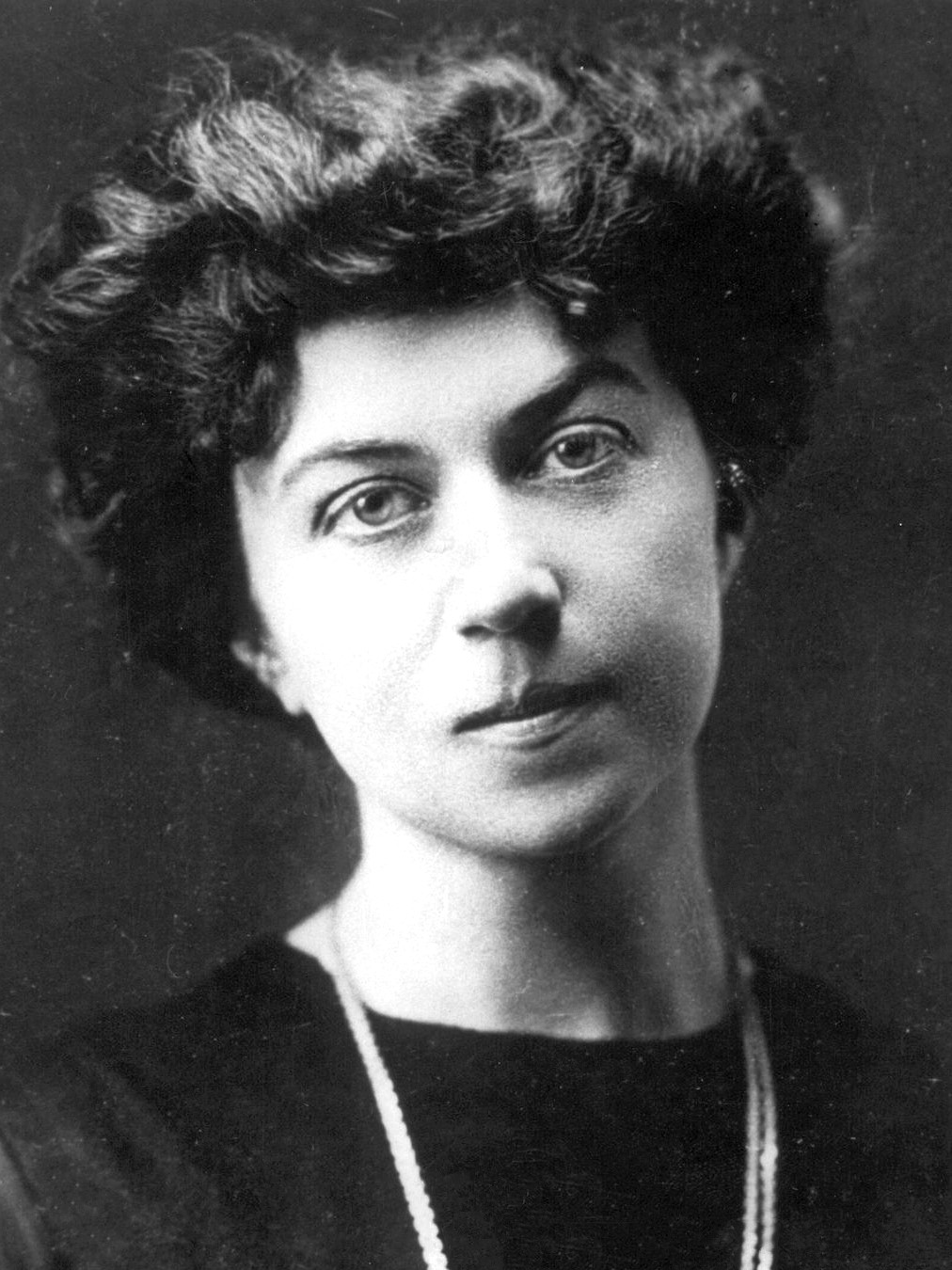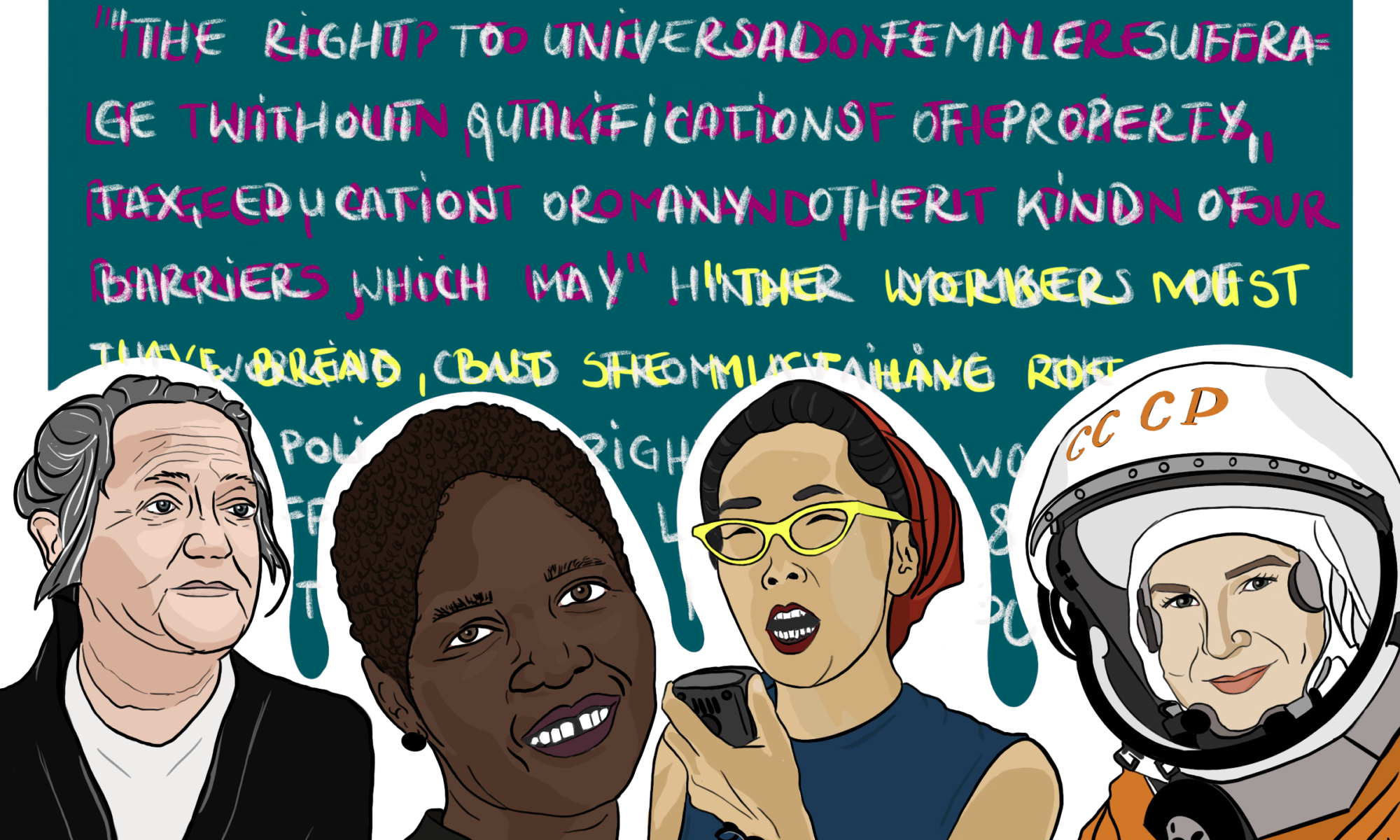throughout the 20th century

Article by Daliana Ilies
Now more than ever, we need to talk about the revolutionary women of the 20th century that achieved an enormous deal for women’s rights and, of course, how we came to celebrate International Women’s Day. I am not a historian, nor am I an expert in this field. My information comes from a place of curiosity and hours of research on the topic. Besides that, I am a woman myself, trying to understand why we are where we are at this point; and, hopefully, learn how we can reach our goals as a unity.
Please take a second to close your eyes and try drawing some imaginary pictures of a fifty-year-old woman living in western Europe around 1900. Saying she’s not ordinary would be an understatement. Now imagine a Marxist theorist, communist activist, and most importantly – an advocate for women’s rights. Maybe by now, you’re asking yourself, how are you supposed to visualize that?! Those are character traits, not physical ones. But picture a woman being part of the Social Democratic Party in Germany at that time.

Her name is Clara Zetkin, and she was probably one of the very few women allowed in such a male-dominant political circle. She started holding conferences to discuss women’s issues, and by 1907 she organized the first International Conference of Socialist Women in Stuttgart, Germany. Her primary goal was to get women into the workforce in order to take part in the worker’s rights organizations. This way, they would have the means to improve their own conditions.
This started a trend. Almost at the same time, the US declared the first women’s day on February 28, 1909, and the streets of New York were packed with women protesting for better pay and working conditions.

1910 a second International Conference of Working Women came together. At that time, over 100 delegates from across the world met in Copenhagen. Zetkin pushed the idea of international women’s day, and the vote was unanimous, meaning they finally had a day when women could organize and press for equal rights.
Even more interesting, some other revolutionary ideas discussed at the conference were:
- 8 hour working day;
- pregnant women should stop working 8 weeks prior to giving birth;
- women should be paid a “motherhood insurance” of 8 weeks if the child lives.
If you think about it, these are also the ideas that heavily influenced the views of maternity and paternity leave that we know today in the most developed countries.

The first-ever European celebration of International Women’s Day happened in Vienna in 1911. Only a year later, more than a million women took to the streets in Germany. And the trend continues in America, being sparked this time by Rose Schneidermann, who insists workers need more than just wages to survive; they also need dignity and decent working standards. With the first world war approaching fast, many countries decide to cancel the holiday to maintain peace on the homefront. To oppose the war, Zetkin organized the 3rd and final Socialist Women’s Conference in 1915.
Present there was Nadezhda Krupskaya, which you probably never heard of. But I’m pretty sure you heard of her husband: Vladimir Lenin. The couple stated that the war only benefited the rich and the weapons manufacturers. Sadly, the war went on, despite all of their efforts.

1917 the most dramatic celebration of the IWD started in Russia, led by the feminist Alexandra Kollontai. Why?
The number of women working in the factories, mainly in the textile or chemical industry, has skyrocketed because men were in the war. The women replacing them were paid only half as much, even though they worked long hours under horrific conditions. Storming the streets of Petrograd on February 23 or in our calendar on March 8, women struck against war, starvation, and the Czar. Two days later, nearly every industry in Petrograd had ground to a halt. The protest wasn’t just women or even workers anymore. Students, teachers, and so many more joined them. The Czars responded by ordering the military to shoot them if necessary. But the protests couldn’t be stopped.
I am remarkably moved and inspired by these women because they had managed to convince whole regiments to switch sides and join them. They went on the streets, risking being shot at and killed. And this was the beginning of the Russian February Revolution, and it was truly women’s day that inaugurated that. But we don’t really learn about this in school, do we? One week after the “celebration”, Czar Nicholas II abdicated, ending about 300 years of Romanov Rule over Russia.
They became one of the first governments of a major power to grant women the right to vote. 1921 it was officially decided that March 8 would be International Women’s Day. Lenin and Zetkin made this a communist holiday in 1922, and the same year the communists in China started celebrating it too. Eventually, all of the progress was destroyed by Stalin in 1936, banning women’s right to vote and even more than that, for example, banning abortion. Being concerned even at the thought of communism, the US erased this day entirely.

Even though South Africa celebrates IWD 2 times a year and has its differences from the European celebration, I have to include one more fearless woman: Lilian Ngoyi. Also known as the Mother of The Black Resistance, Ngoyi was the first woman elected to the executive committee of the African National Congress, helping to form the Federation of South African women. Her energy and her gift as a public speaker won her rapid recognition. On August 9, 1956, (one of the dates when people in South Africa celebrate IWD), she led the women’s anti-pass march, one of the largest demonstrations staged in South African history. Holding thousands of petitions in one hand, Ngoyi was the one who knocked on the Prime Minister’s door to hand over the petitions. She ends up arrested for high treason along with 156 other leading figures.
Now here we are, 2022, and as women we earn less than our male equivalents; we are underrepresented in politics or business. Most scarry, we still suffer significant risks of violence, and many times, women have to handle family care alone. I want our generation to stand up and continue what these lionhearted women created, achieving the freedom we all deserve in all aspects of life.
SOURCES:
- https://time.com/5187268/international-womens-day-history/
- https://www.youtube.com/watch?v=m_UjYOfmkn8
- https://www.sahistory.org.za/people/lilian-masediba-ngoyi
- https://www.encyclopedia.com/women/encyclopedias-almanacs-transcripts-and-maps/ngoyi-lilian-1911-1980
- https://www.youtube.com/watch?v=irUOrXkzoBg
- https://www.youtube.com/watch?v=7gb3ioatsSc
- https://www.cambridge.org/core/journals/slavic-review/article/february-23-and-march-8-two-holidays-that-upstaged-the-february-revolution/44C5064AA9665B7AF449078151FD6AE6
- https://www.dhm.de/lemo/biografie/clara-zetkin
- https://www.youtube.com/watch?v=IEQiHlrxy94

